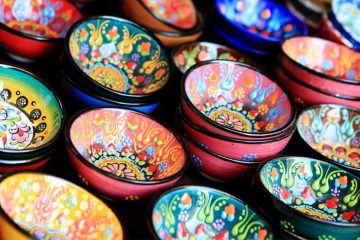How to Improve Your Travel Writing and Capture Your Experiences
Paint a Rich Picture of Your Travels
How many times have you brought a journal along on a trip, only to have it sit empty the entire time? Sure you intend to write about your experiences, but actually sitting down and doing it is another thing.
Part of the hesitation may just stem from not remembering enough details as you go along, not knowing how to describe your trip or having difficulty figuring out where to start.
Record your trip in a way that makes sense to you, or in a way that can then be transformed into an article for publication. If you’re serious about writing, find the time to organize your thoughts and elaborate on the trip as a whole — your unique story of what happened and why it was special.
Here are some tips on how to improve your travel writing so you can do your adventures justice.
Who Is It For?
Even before you go on the trip, if you intend to write about your experience, think about who you are writing for. If you’re only writing for yourself, the writing style can be pretty much however you want it to be.
You can write important details out in bullet points or write long descriptions of places or moments from the trip.
If you’re writing for friends and family, you might consider turning your experiences into a travel blog with more of a firsthand account of your itinerary and the things you enjoyed most on the trip. Deciding to blog as your travel is an especially great idea if you’re more of a visual person and would rather write details in captions, rather than long-form writing or journaling.
Or perhaps you intend to turn your experiences into more of a formal article for potential publication. Articles require detail and an underlying theme tying everything together.
Therefore, taking good notes is essential to writing an effective travel piece.
Tips for Taking Notes
When taking notes during your travels, use all five senses. A location is more than just what meets the eye. What does it sound like? What do you smell? What are the textures around you? What are you eating?
Take a minute to just absorb everything around you before delving into the actual note taking.
Sometimes traveling to a new place can be a bit overwhelming. Take notes on how you feel upon arrival, during your stay and once you leave. Were you reminded of another place or a person while there? Did you have culture shock or miss the comforts of your regular life?
All of these thoughts and feelings are what really flesh out a piece of travel writing, no matter who it’s written for. Note-taking doesn’t have to stop at pen and paper either.
Bring a voice recorder along or use the one built in your phone. Write notes in your phone or use an app like Evernote to organize things like photos, inspiration, or bits of conversation.
In an ideal scenario, all of your note-taking would be done during the actual trip. Just taking a moment to write something down while it’s happening will allow for richer descriptions and a more accurate recollection of the experience. Taking time to flesh out your notes is a simple rainy day activity that will give you something to do while waiting for the weather to clear up and allow you to be productive.
If, however, you come away from a trip with few notes, discussing aspects with travel companions or looking at photos can help jog your memory instead.
Do you know about travel WiFi? Read on to learn about the what it is and how you can use it to stay connected with anyone, anywhere.
What to Include
Small details are what makes a piece of travel writing great. Include the names of people you met and a short description of them.
Write down name of places you went, including streets if it’s not a tourist destination. Avoid just listing things unless you’re making an outline first or jotting down your initial itinerary.
Get started with the actual writing during the trip if at all possible. Pick out your favorite moments and paint a picture for the reader, showing rather than telling what happened.
If you wait until you get home, it may be helpful to use any supplementary materials you kept to guide the writing along.
Supplementary materials are great for jogging your memory and also make a fun addition to a travel journal: receipts, tickets, labels, stickers, etc. For example, receipts from restaurants will remind you what you ate and how much it cost.
This might help remind you if you enjoyed a meal and therefore whether you want to go back or recommend the place to a friend.
Plus, if writing doesn’t end up being your thing, or if you want to explore other ways of commemorating your trips, you can use these supplementary materials in other creative ways to document your travels as well.
Writing down your travel experiences in a journal format is a great way to refer back to things in the future. A helpful tip for making the most of this kind of format is to create an index at the beginning or end of the journal.
Number the pages and then list the destinations and specifics of who, what and where in the index so you can easily access the information at a later date.
Try to also date entries as much as possible so you remember when you did what or even what the weather was like. Although you may have experienced things in a specific order, you don’t necessarily have to write chronologically.
Write about what was most interesting, memorable or downright weird. Ultimately it’s up to you to include or exclude as much of your experience as you want.
You can start at the beginning of your trip, or with the parts you enjoyed the most. The important thing is to get it all down so you can enjoy the memories of your trip for years to come.







